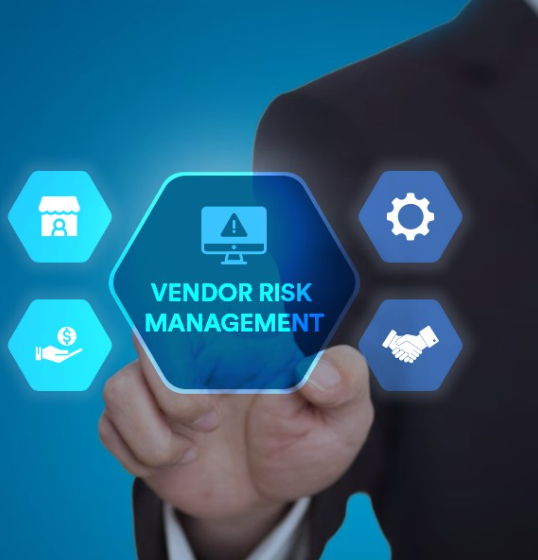In today’s fast-paced business landscape, CFOs face the challenge of balancing operational efficiency with the risks posed by vendors. On one side, there’s the pressure to streamline processes and scale quickly. On the other, there’s the very real threat of vendor failures, fraud, compliance violations, or reputational damage.
The issue is that traditional methods of risk mitigation often slow down operations, making businesses vulnerable to unforeseen disruptions. However, by adopting smarter, more agile approaches, CFOs can manage vendor risk effectively while keeping business momentum intact.
Here’s how you can achieve that balance.
Be Proactive, Not Reactive
Vendor risk management is often approached reactively, dealing with issues only after they arise. However, successful CFOs take a proactive approach by evaluating risks before finalizing vendor contracts. This includes conducting thorough due diligence, assessing financial health, verifying compliance, and performing operational audits.
While this may seem like an extra task, integrating risk assessment into the onboarding process can prevent significant problems down the line. To ensure efficiency, standardize the process with pre-vetted checklists and streamlined workflows. This makes it easier to manage risks quickly without creating bottlenecks.
Leverage Advanced Contract Management
Contracts play a pivotal role in vendor relationships but often hide significant risks. Missed deadlines, non-compliance issues, or untracked changes in service levels can all lead to unexpected problems. Modern contract management systems provide a powerful solution. These platforms not only help organize contracts but also send alerts for key dates, compliance requirements, and renegotiation opportunities.
Many contract management tools integrate with vendor performance monitoring systems, giving CFOs real-time insights into both risks and opportunities.
Score and Segment Vendors
Not all vendors pose the same level of risk. A delay from a non-essential supplier might be an inconvenience, but a compliance issue with a critical IT vendor can be disastrous. To manage vendor risk efficiently, categorize and score vendors based on their risk profile and potential impact on your business. Critical vendors should undergo more thorough reviews and frequent monitoring, while lower-risk vendors can follow a more simplified process.
This approach ensures that your efforts and resources are focused where they matter most, without overburdening your operations.
Ensure Real-Time Visibility
Vendor risk is dynamic. A reliable supplier today might face financial or regulatory challenges tomorrow. Therefore, annual vendor reviews are no longer enough. CFOs should invest in real-time monitoring tools to stay ahead of emerging risks. These systems—whether through third-party risk databases, specialized platforms, or internal dashboards—offer early warnings about changes that may impact vendors.
Imagine having a system in place that alerts you when a supplier’s credit rating drops or when a crucial compliance certification expires. This kind of visibility helps turn vendor risk management into a proactive and confident strategy, rather than a reactionary scramble.
Foster Vendor Collaboration
Vendors should be viewed as strategic partners, not just suppliers. A collaborative approach is key. Start by setting clear expectations and maintaining open communication. Offer support when issues arise and encourage vendors to share concerns early on.
When vendors feel engaged and valued, they are more likely to notify you about potential risks, suggest improvements, and even provide more favorable terms. This collaborative mindset turns risk management into a shared responsibility, benefiting both parties.
Conclusion
Managing vendor risk doesn’t have to slow down your business. By incorporating proactive screening, using smart tools like contract management software, investing in real-time monitoring, and fostering collaborative relationships with vendors, CFOs can reduce risk and keep business operations running smoothly.
With the right systems in place, businesses can navigate challenges with confidence and continue to thrive in a fast-paced environment.


